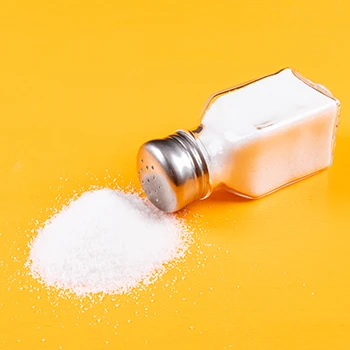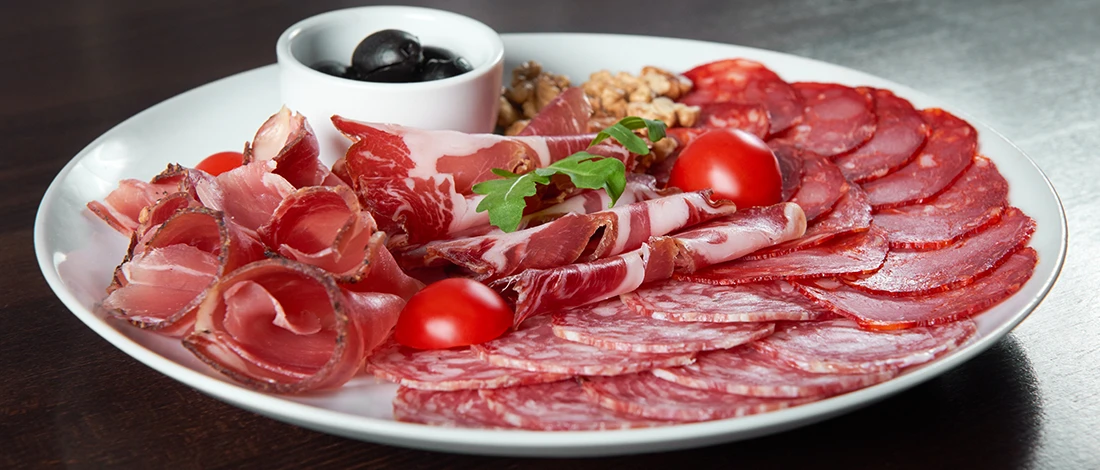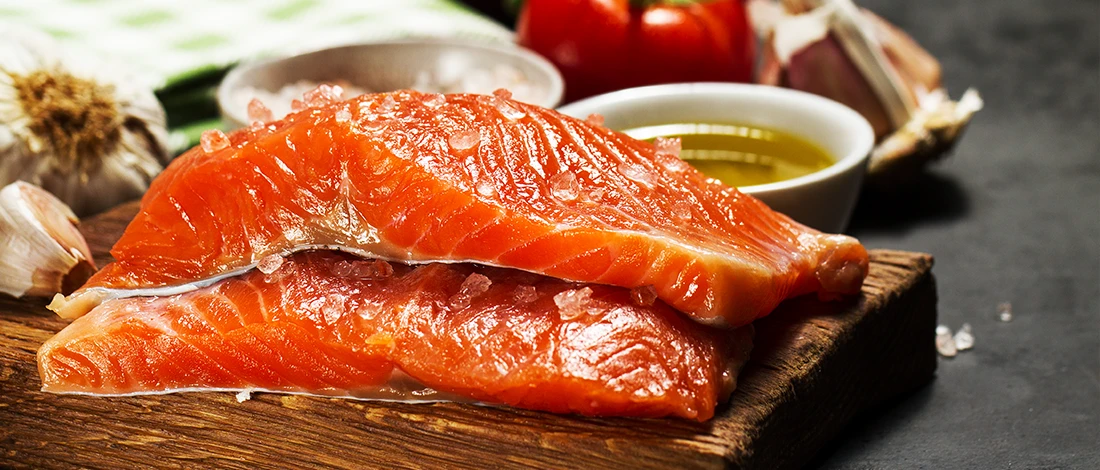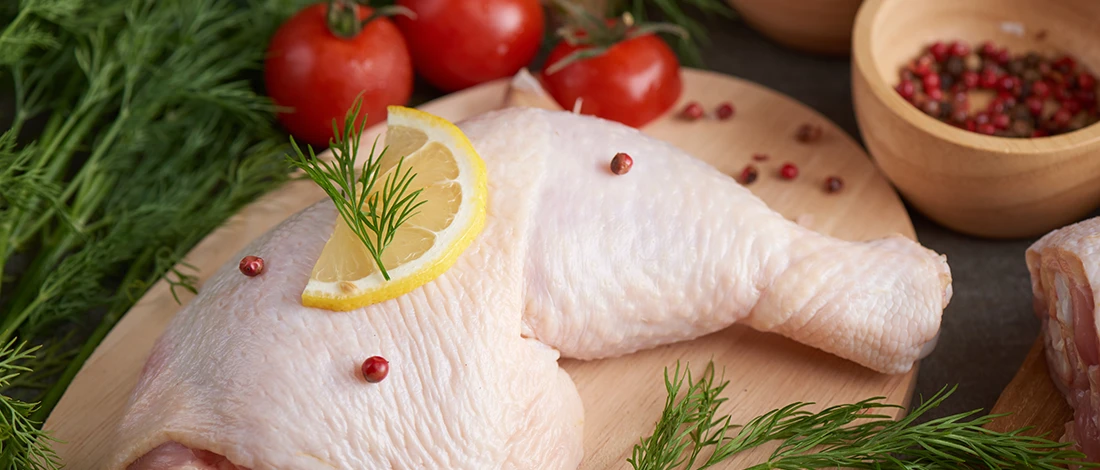As a carnivore devotee who’s had some issues with blood pressure but loves lunch meat, I started to watch out for my sodium intake ever since I discovered lunch meats are abundant in it.
I have thoroughly researched the topic and talked to my dietician until I discovered some excellent options for low-sodium lunch meat that can help satisfy your cravings.
Here is everything you should know about low-sodium lunch meats.
Quick Summary
- Low-sodium lunch meats should have no more than 140mg of sodium per serving.
- The FDA has labeling standards for sodium content in food, including reduced sodium, light in sodium, no-salt-added, very low sodium, low sodium, and salt/sodium-free.
- To reduce sodium intake, consider cooking at home more often, using fresh ingredients, seasoning with herbs and spices instead of salt, watching serving sizes, and avoiding added monosodium glutamate.
- ButcherBox offers a variety of fresh, humanely raised meats that are perfect for a heart-healthy lunch.
What is Low Sodium Lunch Meat?
Low-sodium lunch meat is deli meat with less sodium than traditional ones. Lunch meats are an ideal option for people who want to reduce their salt intake.
According to American dietary guidelines, sodium intake should be limited to 2,300 milligrams a day for people 14 years and above [1].
You’ll know that lunch meat has low sodium if it is labeled in a way that corresponds to Food and Drug administration.
Low Sodium Lunch Meat Available
There are several varieties of low-sodium lunch meats available on the market today.
These include the following types:
- Butterball turkey breast: has 37% less sodium, with 165 milligrams sodium per ounce of serving.
- Boar’s Head turkey breast: has no added salt, with 55 milligrams per 2-ounce serving.
- Hillshire oven roasted turkey breast: low in sodium, with 170 milligrams sodium per ounce serving.
The Purpose of Sodium

Sodium is an essential electrolyte that helps to regulate blood pressure, maintain fluid balance, and support nerve function. It's found in a variety of foods, including lunch meats.
While sodium is necessary for good health, too much in your diet can lead to high blood pressure, a significant risk factor for heart disease and stroke.
People with kidney disease should eat a lower sodium diet compared to those without.
"Sodium intake from processed and restaurant foods contributes to high rates of high blood pressure, heart attack, and stroke. Because nearly 500,000 deaths each year are related to high blood pressure, reducing sodium intake could prevent thousands of deaths annually."
- U.S. Centers for Disease Control and Prevention
However, the U.S. Department of Agriculture and Department of Health and Human Services also note that most Americans consume far more sodium than is recommended.
In fact, the average American adult consumes about 3,393 mg of sodium every day [2].
This is mainly because sodium is added to various processed foods, including cured meats.
If you're trying to limit your sodium intake, you must know how much sodium is in your lunch meat.
Understanding Sodium Labels on Lunch Meats

In order to help consumers make informed choices about the sodium in their food, the FDA has developed labeling standards for manufacturers.
These standards require nutrition information labels to include the following:
- The percent daily value (%DV) for sodium
- The number of mg of sodium per serving
The FDA has also created rules about how food manufacturers can label their products regarding sodium. Some labels deal with total sodium per serving, and others with lower sodium compared to the regular version.
Here are the ways products may be labeled and what they mean:
- Reduced Sodium - At least 25% less sodium per serving than the manufacturer's regular product.
- Light in Sodium or Lightly Salted - At least 50% less sodium per serving of the manufacturer's standard product.
- No-Salt-Added or Unsalted - No sodium is added during processing – but these products may not be salt/sodium-free.
- Very Low Sodium - 35 mg of sodium or less per serving.
- Low Sodium Deli Meat - 140 mg of sodium or less per serving.
- Salt/Sodium-Free - Less than 5 mg of sodium per serving.
Ways to Reduce Sodium Intake

Here are eight tips on how to reduce your total sodium intake.
- Cook at home more often. When you go out to lunch, it's hard to know how much salt is in your food. Cooking at home gives you more control over the sodium in your meals.
- Use fresh ingredients instead of processed meats. Processed meat and cured meat have sodium nitrate and nitrite as artificial preservatives. Creating your own low-sodium deli meat from natural oven-roasted turkey breast or roast beef is a great way to avoid getting too much salt.
- Get rid of the salt shaker. You probably don't need as much salt as you think you do. Once you get used to eating less salty food, you'll be surprised at how little you miss it.
- Season your chicken breast with herbs and spices instead of salt. There are so many different flavors out there that you're bound to find a combination you like.
- Watch your serving size. Just because something is low in sodium doesn't mean you can eat as much of it as you want. Remember to portion out your turkey breast so that you're not consuming too much sodium.
- Make sure your food doesn't have added MSG (monosodium glutamate). Along with saturated fat, this ingredient is often added to processed foods to make them taste better, but it's also high in sodium [3].
- Be careful about your condiments. Cheese, mustard, and mayo can all add a lot of sodium to your sliced turkey breast. Choose low-sodium versions or use them sparingly.
- Bread can also be a source of sodium. Choose a brand of bread that is low in sodium, or make your own from scratch.
Related Articles:
FAQs
What Deli Meat Is Lowest in Sodium?
The deli meat lowest in sodium is dependent on the brand. Boar’s Head is different from Hillshire farm, which is different from other brands. Each manufacturer has its recipe, so you'll need to check the sodium on each product's label.
What Is the Healthiest Deli Meat?
The healthiest deli meat is one that is lean, low-sodium, and preservative free. This is a chicken breast, turkey, lean roast beef, or Black Forest ham for most brands.
Are There Any Deli Meats Without Sodium?
There aren’t any deli meats that are entirely without sodium. Sodium is a naturally occurring element that will be present in all flesh, even if there is no salt added during the manufacturing process. Fresh and unprocessed deli meat, like oven-roasted turkey breast, has a lower sodium content.
How Do You Avoid Sodium in Lunch Meat?
To avoid sodium in lunch meat, look for ones with no added salt or labeled as "low sodium," "very low sodium," or "salt-free". You can also choose fresh foods rather than cured or processed, and ask your butcher or grocer if they carry low sodium deli meats.
Does Turkey Lunch Meat Has Sodium?
Yes, turkey lunch meat contains sodium, but the amount can vary depending on the brand and whether it's a low-sodium variety. Sodium is often added to deli meats like turkey for flavor and preservation.
References:
- https://www.dietaryguidelines.gov/sites/default/files/2020-12/Dietary_Guidelines_for_Americans_2020-2025.pdf
- https://www.floridahealth.gov/programs-and-services/prevention/healthy-weight/nutrition/sodium/index.html#
- https://www.mayoclinic.org/healthy-lifestyle/nutrition-and-healthy-eating/expert-answers/monosodium-glutamate/faq-20058196








